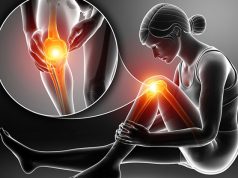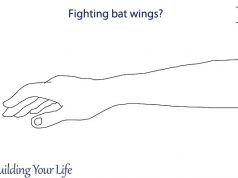There are a variety of symptoms that can affect your heart and result in heart disease. Diseases such as blood vessel diseases, heart rhythm problems, coronary artery disease – all of them are the result of heart conditions. Cardiovascular disease is another way of saying heart disease. When your blood vessels are blocked or narrowed, there is a high risk of a heart attack, stroke and chest pains. Even conditions such as those related to your heart’s rhythm, valves and muscle can be classified under heart disease.
With so many different conditions, it becomes hard to categorize what heart condition a patient is undergoing. However, they can be divided into these categories for quick diagnosis and treatment:
Atherosclerotic Disease – Heart Disease Symptoms from Blood Vessels
When blood vessels see obstructions in the blood flow as a result of stiffened, blocked or narrowed surfaces, cardiovascular disease is not down the road as your body does not get enough blood as a result of a less-than-ideal blood vessel network. Men and women are likely to have different symptoms. For example, chest pains are more prevalent in men than in women. Shortness of breath and extreme fatigue are more prevalent in women. The list of symptoms for atherosclerotic disease includes:
- Angina – Chest pains
- Shortness of breath and panting
- A numb or weak or cold feeling in your arms and legs as a result of less blood flow
- Neck, jaw, back or throat pains
It’s important to look for these tell-tale signs because most heart patients are never diagnosed until they have a heart attack or stroke or angina. At worse, it can even result in heart failure to recognize that you suffered from heart disease. If you feel anything remotely like the symptoms, then taking a medical exam regularly can help doctors identify the problem before it becomes huge.
Heart Arrhythmias – Symptoms Caused By Abnormal Heartbeats
A heart arrhythmia is, quite simply, when a patient has an irregular or abnormal heartbeat. This can mean anything to a heart that beats too fast or a heart that beats too slowly. It can also mean if your heart beat is erratic in its beat. Symptoms for arrhythmia include:
- Racing heartbeat – also called tachycardia
- Slow heartbeat – also called bradycardia
- Chest discomfort
- Chest fluttering
- Chest pains
- Dizziness
- Shortness of breath
- Fainting or near fainting
Heart Defect – Symptoms Arising From Defects
Sometimes a heart develops some defects (also referred to as congenital heart defects) soon after birth. This can be genetic and hereditary. Signs that tell if you have a heart defect include:
- Swelling in limbs such as those in legs, abdomen
- Pale skin color – blue or gray skin (also referred by cyanosis)
- Blacked area around eyes
- Shortness of breath in infants that results in poor weight gain
There are some congenital heart defects that do not manifest themselves until later in childhood or adulthood. These are not life-threatening symptoms though they also should be monitored:
- Easily tired after physical activity
- Shortness of breath after any exercise
- Hand, foot or ankle swelling
Dilated Cardiomyopathy – Symptoms Brought About By Weak Heart Muscles
When the heart muscles get either too thick or too stiff, the phenomenon is classified as Cardiomyopathy. Initially, in its earliest stages, the patient might not have any symptoms. With time, symptoms like these are brought about:
- Swelling in the regions surrounding legs, feet or ankles
- Breathless feeling even when resting
- Fatigue
- Heartbeats that are irregular, too fast or too slow
- Dizziness
- Fainting
- Light-headedness
Heart Infections – Symptoms Caused By These Infections
Heart infections can be classified in 3 main categories:
- Pericarditis – affects the tissue surrounding the heart (also known as pericardium)
- Myocarditis – affects the walls and the muscular middle layer around the heart (also called myocardium)
- Endocarditis – afflicts the inner membrane that’s responsible for separation of the chambers and valves of the heart (also called endocardium)
Heart infection symptoms can be listed as:
- Feverish feeling
- Breathlessness
- Fatigued state
- Legs or abdomen swelling
- Irregular heart rhythm
- Dry coughing
- Skin rash
Valvular Heart Disease – Symptoms
The human heart comprises of four valves that control and direct the blood flow. They are the aortic, mitral, pulmonary and tricuspid valves. Since their function is to open and close the blood flow, any damage to them has far-reaching consequences for the human body. They can be damaged due to narrowing (stenosis). They can even leak (regurgitation). They can sometimes close improperly (prolapsed). These conditions are dependent on which valve is not performing. However, the symptoms to identify valvular disease include:
- Fatigue
- Shortness of breath
- Irregular heartbeat
- Swollen feet or ankles
- Chest pain
When detected earlier by observing these symptoms, heart conditions can be controlled and taken care of at a fraction of the cost and without the risk of any major damage to the human body. Talking to doctors about your heart health is important. Seeking medical care is something that should be done immediately. The heart is one of the most important organs of the human body and monitoring these symptoms for any signs is recommended.







